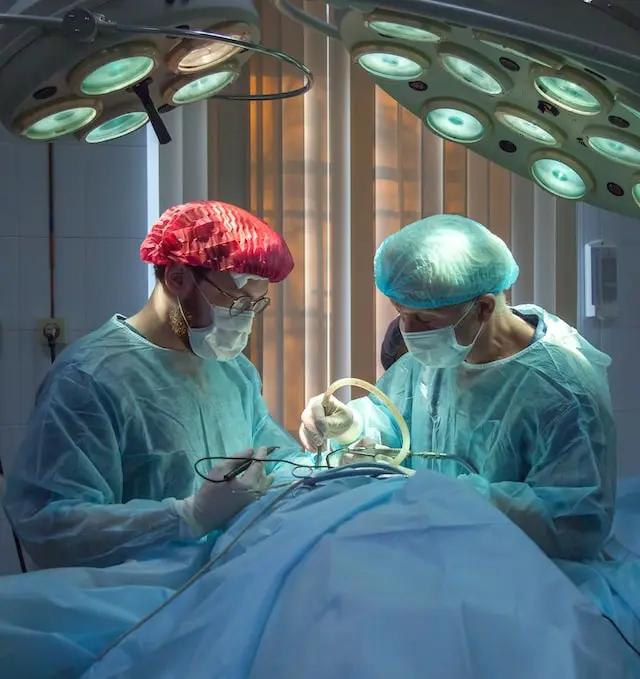27. January 2024
Role of Video in Medical Simulations - the Ultimate Guide
Medical simulations have become an increasingly popular tool in medical education in recent years. These simulations use video and other technology to create simulated medical situations that allow students to practice their skills and make decisions in a safe and controlled environment.
Benefits
One of the key benefits of medical simulations is that they can provide a realistic and immersive learning experience for students. By using video and other technology, simulations can closely replicate real-world scenarios, allowing students to practice their skills and make decisions under conditions that closely resemble those they will encounter in their future careers.
In addition to providing an immersive learning experience, medical simulations can also help students to develop critical thinking and problem-solving skills. By confronting students with complex and challenging scenarios, simulations can help students to develop the ability to analyze situations, identify problems, and come up with solutions.
Limitations
Despite the many benefits of medical simulations, it is important to recognize that they have limitations. Simulation can never fully replicate the complexity and unpredictability of real-world medical situations, and it is important that students also have opportunities to practice their skills in real-life settings. Additionally, simulations can be expensive to create and maintain, and may not be accessible to all students.

Let us consider a few specific uses of medical simulations.
Use Cases
Interactive Simulations for Remote Healthcare Learning
Interactive video simulations for remote healthcare learning are a type of online educational tool that allows students to practice their skills and make decisions in simulated medical scenarios through a video platform. These simulations typically involve the use of video and other technology, such as virtual reality or augmented reality, to create a realistic and immersive learning experience.
To use interactive video simulations for remote healthcare learning, students typically log in to a platform and are presented with a simulated medical scenario. The scenario may be presented in the form of a video, virtual reality experience, or other interactive format. As they work through the scenario, students are presented with various options and must make decisions based on the information they have.
One of the key benefits of interactive video simulations for remote healthcare learning is that they allow students to practice their skills and make decisions in a safe and controlled environment. This can be especially valuable for students who may not have access to real-world clinical experiences or for students who are just starting their healthcare education and need to build their knowledge and skills.
Another benefit of interactive video simulations is that they can be tailored to the needs of individual students. For example, a student who is struggling with a particular concept or skill can be presented with a simulation that focuses on that area, allowing them to practice and improve their skills in a targeted way.
Video assisted Debriefing
Debriefing refers to the process of reviewing and reflecting on the performance of students during a simulated scenario, with the goal of helping students to better understand the concepts and skills being taught and to identify areas for improvement. Different approaches to debriefing in simulation-based learning involve some form of review and reflection on the performance of students. This may involve the use of video recordings, written reports, or discussions with instructors or peers.
Video assisted debriefing is a technique that involves using video recordings of simulated medical scenarios to help students review and reflect on their performance. This technique is often used in simulation-based learning, which is a teaching approach that uses simulated medical scenarios to allow students to practice their skills and make decisions in a safe and controlled environment.
One of the key benefits of video assisted debriefing is that it allows students to review their performance in a simulated scenario and identify areas for improvement. By watching the video of their performance, students can see what they did well and what they could have done differently, which can help them to better understand the concepts and skills being taught.
Video assisted debriefing can also help students to develop critical thinking and problem-solving skills. By watching the video of their performance and discussing it with their instructors or peers, students can learn to analyze situations, identify problems, and come up with solutions. This can be especially valuable for students who are just starting their healthcare education and need to build their knowledge and skills.
Another benefit of video assisted debriefing is that it can be used to facilitate discussion and collaboration among students. By watching the video together and discussing their performance, students can learn from each other and gain a deeper understanding of the concepts and skills being taught.
Vizle can help you documents these notes effectively without needing you to watch the whole video again. Vizle converts these videos to PDF file with key visual screenshots and spoken notes. You can thus print the PDF and make notes as debriefing progresses.
Improving Clinical Skills
By using video to record simulated scenarios, instructors can review the performance of students in detail and provide specific feedback on areas where they need to improve. This can be especially valuable for students who may not have access to real-world clinical experiences, as it allows them to receive feedback on their skills and progress in a safe and controlled environment. Also, useful for students who are just starting their healthcare education and need to build their knowledge and skills.
Conclusions
Overall, the role of video in medical simulations is an important one, as it helps to create realistic and immersive learning experiences for students. While simulations can be an invaluable tool in medical education, it is important to recognize their limitations and ensure that students also have opportunities to practice their skills in real-world settings.